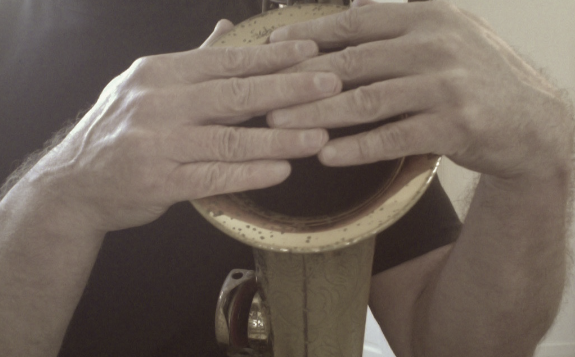I had the good fortune some years back to study the saxophone with Los Angeles woodwind doubler guru, Bill Green. The older I get, the more I appreciate (and put into practice) the things he taught me.
Bill played all of the instruments in the traditional woodwind family: the saxophones, clarinets, flutes, as well as oboe (English horn, too) and bassoon (including contra!) His ability to move from one to another and play with considerable ease, confidence and skill was his calling card. (He played on countless television and motion picture recording sessions.) Needless to say, he was a highly disciplined musician, who practiced a great deal.
One of the things Bill always had going on was a “project”, as he called it. This was his way of describing the ongoing, dedicated work that he applied toward developing (or improving upon) a very specific skill.
The need for these “micro” skills was constantly revealed to him through his work. He loved to find technical demands that “put him in the wrong”, and find a way to master them.
For example, some of his projects were things like: slurring rapidly between high ‘E’ and high ‘A’ on the flute; double tonguing in the first octave of the English horn; playing secondary minor triads in all keys on the soprano saxophone up into the altissimo register.
He went deep into these projects, was very methodical in his approach to them, and was entirely mindful and disciplined in his pursuit.
He told me that no matter what he needed to practice on any given day, he made a commitment to spend a predetermined amount of time on his project until he achieved his objective. For some projects this was maybe 10-15 minutes per day, and for others, as much as an hour.
By practicing this way, he developed three very valuable assets:
1. A continuously growing set of skills that expanded his capabilities as a studio musician, effectively increasing his chances to work more frequently, and express himself more readily.
2. A sense of self-efficacy. (He developed an iron-clad confidence in his ability to analyze and effectively prescribe and carry out the work necessary to deal with any pedagogical difficulty that might come his way.)
3. The intrinsic reward of solving problems. (He didn’t avoid the “impossible”; he actively sought it out and welcomed it with joy.)
For many years I have applied this approach to deepening my own skills, both as a saxophonist and as an improviser. I tend to balance the regular, daily work of my practice (tone production, technical studies, eartraining, Improvisational work, etc.) with some kind of a project.
Of course, these projects are often specific elements nestled into the above mentioned “daily work”. (For example, this last week I started a project involving slurring overtones on the saxophone in ever-widening intervals using the octave key; really helpful for adding complex color and resonance to my sound!)
Many of my projects are to develop specific improvisational skills, whether it be aural familiarity and control of specific tonalities (forming diatonic triad pairs from the 6-note augmented scale was a recent project), or of time, rhythm and/or form (playing “Giant Steps” in 7/8 was a project from about two years ago).
Here’s something very important that I learned from practicing this way: I never lose the skill I’ve acquired. I just keep building upon what I have. The skills become part of who I am as a musician, become integrated into what I do, and readily available.
So if you don’t have a project, I heartily suggest that you find one and dedicate yourself to carrying it out. Here are some guidelines that might help you:
- Start with your need, and turn that into genuine interest. What would you like to improve upon? What sparks your interest? What would the possibilities be in your musical expression with this new skill?
- Examine your motivation? Does your wish for this new skill come from inspiration or fear? It’s best if it comes from inspiration, from a place of love and positive energy (see my point above).
- Balance addition with subtraction. Keep in mind that not all improvement means adding things. Lots of pedagogy is aimed at subtracting things: bad habits to be specific. If you’re struggling with certain things technically, ask yourself, “What do I need to stop doing to improve in this area?” (For example, are you stiffening your fingers, needlessly tensing your facial muscles and/or jaw?) Then aim at playing with greater ease and control by subtracting the excess tension.
- Work as specifically as possible. Define not only your goal, but also, how you can best carry it out. Sit down with pencil and paper and think your practice strategy and prescription through. (It’s worth the time to do so, I promise you!)
- But don’t be too specific about time. Aim for a clearly defined goal (for example, “to play this particular scale in sixteenth notes at quarter note equals 120 in all three octaves”). Carry out the work in daily sessions (with predetermined time allotments for each session), but don’t get too hung up on how long (weeks, months) it should take. If it’s taking more time than you think it should, reassess (and then see below:)
- Smaller is better. Make sure your project is attainable in a relatively short period of time (one week, to let’s say, three months). Anything that takes longer is not really a project but is either an ongoing skill (a daily practice habit) or it is several projects needing to be separated out and defined. When in doubt, cut it in half. You’ll stay motivated this way, as you keep your effort in close proximity to the desired result.
- Aim for ease in yourself. No matter what the goal of your project is, one of the requirements should be that you cultivate a natural and efficient use of yourself as you carry it out. If you’re adding tension to what you do, you’re most likely moving in the wrong direction.
- Always have a project. Get in the habit of not only knowing what you’re current project is (and where you are in reaching your goal with it), but also, what your next project might be.
One of the things I notice with many musicians who don’t seem to improve (despite their daily practice) is a “maintenance” approach in their practice, addressing only the very general pedagogical skills, but with little (if any) deliberate work toward specific skills that are outside of their reach.
If you continue to work on the basics every day, yet always have a project that brings you into a deeper, more specific set of skills, you can’t help but improve. It worked for the maestro, Bill Green, it’s been working for me, and it can work for you, too.


